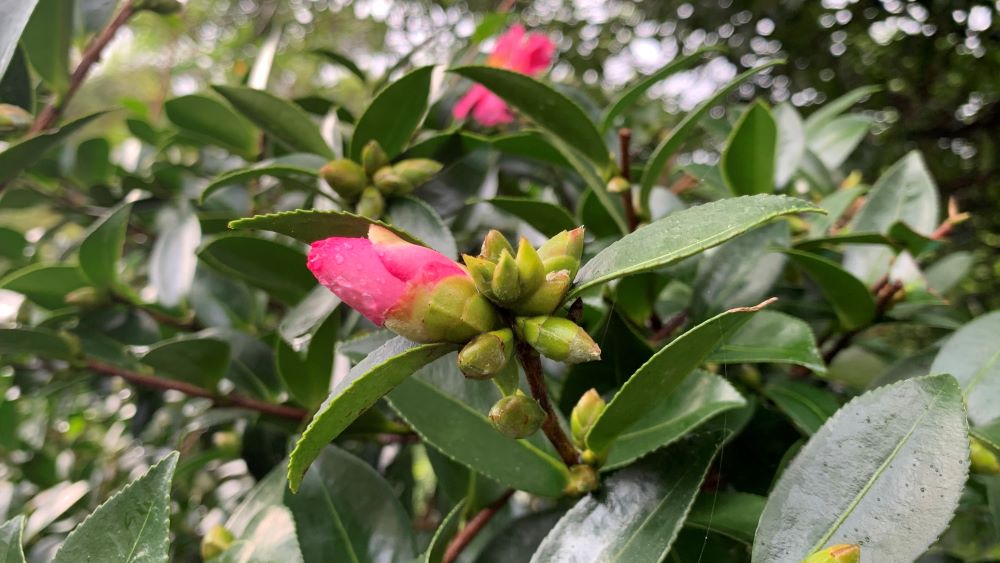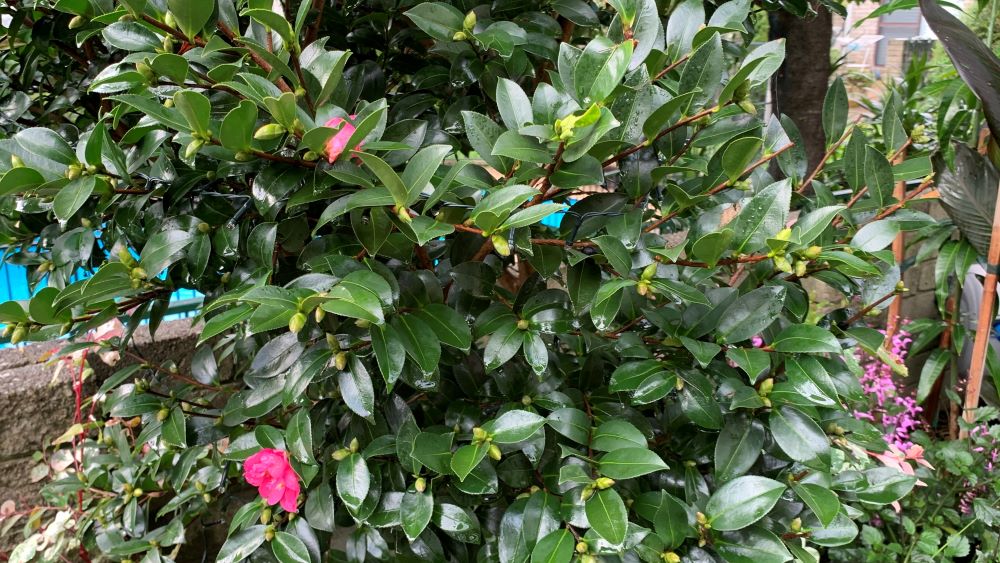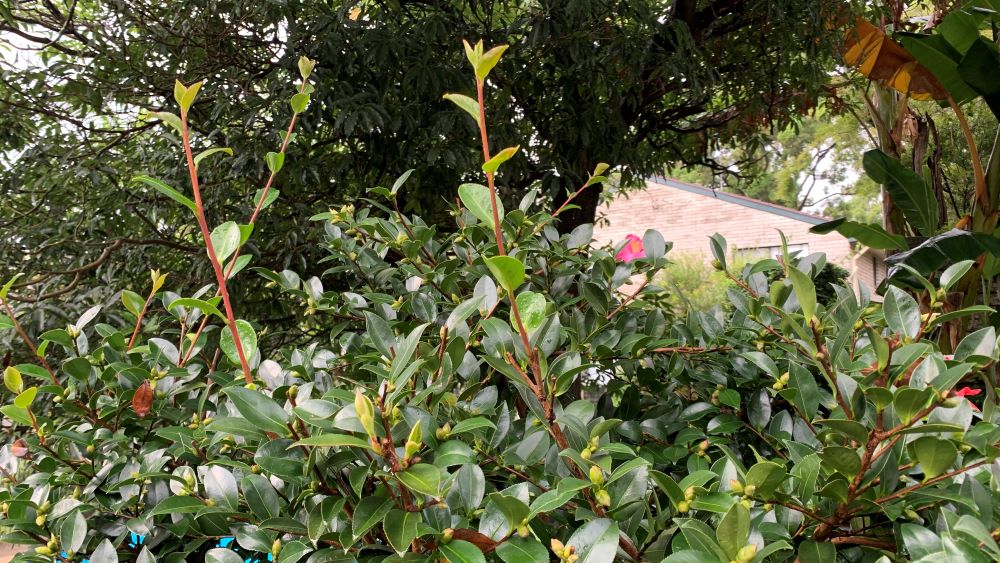Camellias do not have invasive roots. Their roots grow in thick mats near the surface of the soil and stay around the size of the tree canopy. They will send some deeper roots down to anchor the plant. It is best to plant camellias away from house foundations or buildings to allow enough room for the tree to reach the maximum size you are aiming for.
You can keep camellia canopies and roots systems smaller by regularly pruning the plant. Prune it after each flowering to keep the branches well balanced and encourage new, healthy growth.

The surface roots will absorb lots of water and nutrients for the plant while the deeper roots are used to anchor the plant in the soil.
This article will explore more about camellia root systems and what you should know before planting one in your yard.
Do camellias have a big root system?
The root system on a camellia plant will generally be as wide as its widest branch. If you prune your camellia hard all of a sudden then the roots can exist beyond the canopy.
If you prune the camellia frequently then the root system will stay smaller and match the size of the plant.

Camellias can grow happily in pots if they are prune regularly. While camellias can grow into large trees, you can grow them as a small shrub with a small root system by pruning them regularly. I like to tip prune my camellia to keep it to shape. I do this at 2-3 times per year after it flowers.
Planting camellias near buildings and foundations
Camellia plants do not have invasive roots so are not likely to cause damage to buildings unless they are planted too close. The roots themselves will usually stop once they hit a solid base but the branches can grow wider and rub against walls.
It is best to decide on the maximum size that you want your camellia to grow to before planting and then allow enough space for the canopy and roots. Small shrubs may need 3-4 foot of space while if you plant to grow it into a large tree, you may nee 6 feet or more either side of the tree.
My camellia is around 6 feet tall and is growing happily near our garden wall. I keep this well trimmed into an informal ball shape and its roots are around 3 feet wide. The depth of the roots is a maximum of 3 feet deep and the tree is growing strong and healthy.

Camellias with deeper ground soil will reach some of their larger roots deeper to stabilize the plant and access the moist soil deeper down.
Camellia roots will seek out water
It is important to note that camellia roots will seek out water. If there is a leaking tap or pipe the camellia roots will venture towards the water source. It is always best to avoid planting any plant near water pipes. Always check before you dig a hole in your yard that there are no shallow pipes or drainage.
Keep camellias away from your downpipe because the roots can invade the space. Put mulch around your down pipe instead.
For more on this, check out my article here: My downspout is washing away mulch! | 7 Easy Solutions
Are camellias invasive?
Camellias are not an invasive tree and respond well to regular pruning. You can keep your camellia small or grow it larger if you like. You can shape them into topiary or a formal hedge or let them to a larger, natural tree shape.
Camellias are versatile hardy plants but will need regular water when you first plant them out. This will help them to develop a healthy root system which will stabilize them in high winds and allow them to reach water deeper down in the soil.

Root system of potted camellias
Potted camellias will grow a root system to fill the pot and match the size of the shrub. You can keep them small in the same pot for 2-3 years before they will need to be repotted and the soil refreshed.
Camellias can grow in large pots or even a half wine barrel but you will need to transition them up gradually. Don’t place a small camellia into a large pot because the excess soil around the roots will stay too wet and cold and can cause root rot.
Are Camellia Roots Invasive? | Summary
Camellias do not have invasive roots but it always best to plant them away from water pipes, downpipes and to give them enough space to grow to full size. Camellias can be kept small if you prune them regularly and their roots will mirror their leaf canopy.
Camellias can grow into large trees or be kept as small shrubs. Prune them regularly if you want to keep them small rather than pruning them hard all in one go. Removing large branches will mean that their roots may still be wider than the canopy.

I have an old established camellia plant in my front yard that is at least 10 years old. This has been kept small through regular pruning and I am shaping it into an informal topiary. Camellias will grow more leaves on the side that gets the most sun. To keep the tree balanced, make sure you place it in a position that gets at least 6 hours of sun.
I am an accredited practicing dietitian, experienced gardener and a dedicated cook. I love writing and sharing my experience so you can learn from my successes and mistakes.
